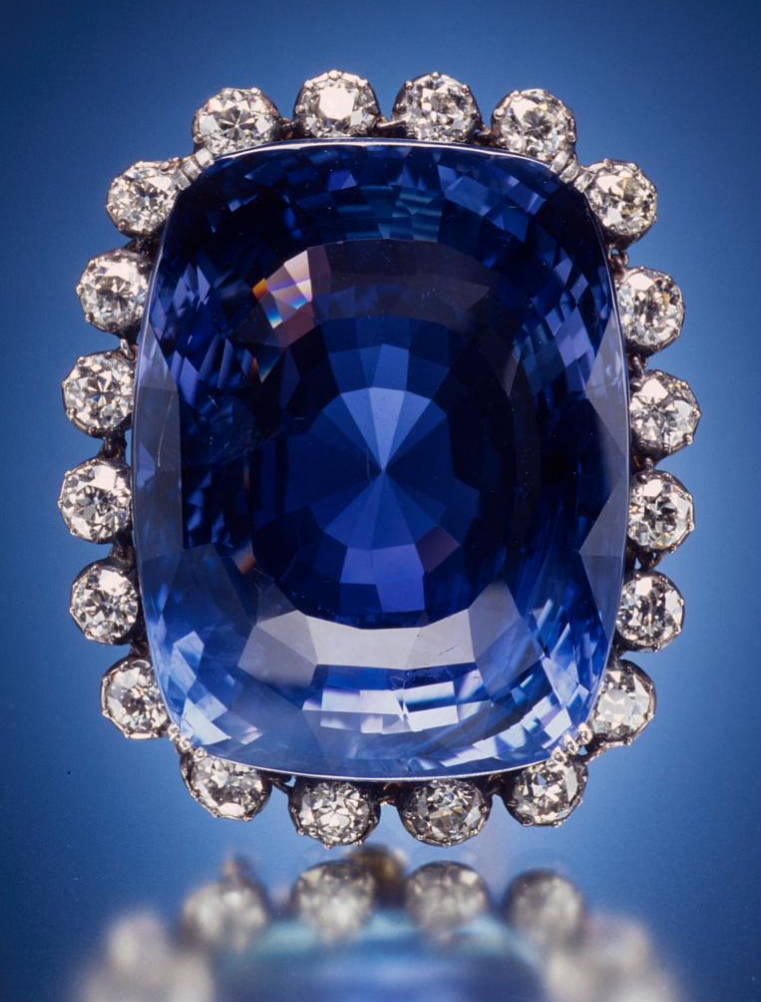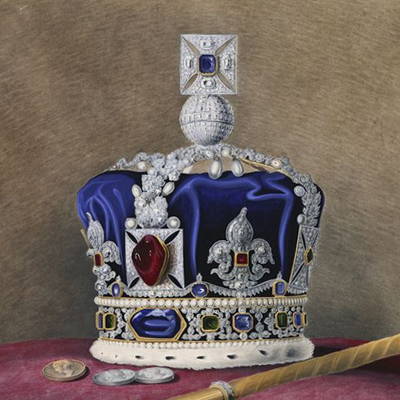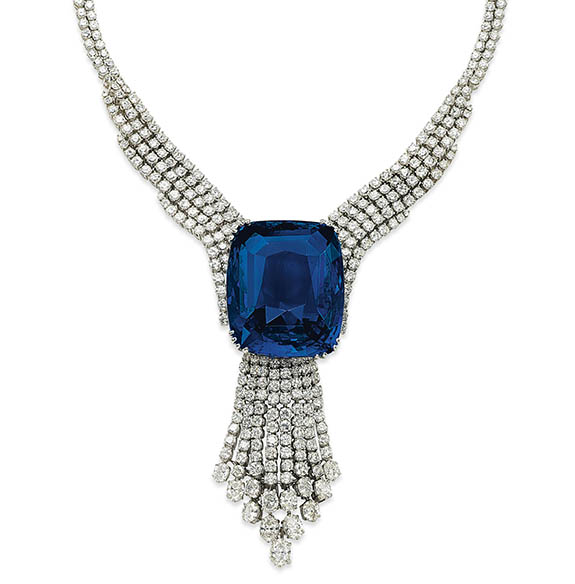Famous Sapphires in History: Tales of Elegance & Intrigue
Have you ever truly explored the enduring allure of sapphires?
More than just a dazzling stone, the captivating stories behind famous sapphires make them even more valuable than a carat ever could. There are gaps in the stories, unanswered questions and a fair share of violence. If you’re ready, take a trip through time as we unveil 5 gemstone legends.
Star of India: A Celestial Gem
“[The Star of India] has a more or less indefinite historic record of some three centuries.” - George Kunz
One of the largest and most famous sapphires in the world, the Star of India is a symbol of mystery. So intriguing and beautiful that it was once stolen by clever thieves, this gemstone is finally back in safe hands.
The Star of India’s journey from ancient times to today began in Sri Lanka. The exact date is still a mystery, but loud whispers say it was discovered during the mid-19th century.
This gemstone legend rings in at a mind-blowing 563.35 carats. It’s almost flawless with stars on either side that become visible when stricken by light.
The greyish blue gem was part of an impressive collection at the Paris Exposition in 1900 when it was procured by gem expert of Tiffany & Co., George Kunz.
It spent a significant portion of its life in the American Museum of Natural History but was stolen, alongside other historical gemstones, in 1964. The thieves, who climbed in through a bathroom window, were lucky enough to find the sapphire was being “protected” by a broken alarm.
“Murph the Surf” and his two accomplices were arrested but there was no sign of the Star of India. Some time later, one of the thieves led authorities to a bus locker in Miami where the stone was finally recovered.
Today, it lives at the American Museum of Natural History. Now, we imagine, complete with a working security system.

By This picture was taken by Daniel Torres, Jr. on January 14, 2007. - Transfered from en.wikipedia Transfer was stated to be made by User:Multichill., Attribution, https://commons.wikimedia.org/w/index.php?curid=3203393

By Chip Clark, Smithsonian staff - https://geogallery.si.edu/10002687/logan-sapphire, Public Domain, https://commons.wikimedia.org/w/index.php?curid=116461673
The Logan Blue Sapphire: A Royal Connection
“It’s simply not a stone you can wear casually.” - Rebecca Guggenheim
Renowned for its deep blue hue and historical connections to the Logan family, the Logan Blue Sapphire has taken many turns in its journey from Sri Lanka to becoming a treasured part of the Smithsonian’s National Gem Collection.
At 422.98 carats, not only is this a true gemstone legend, but it’s also one of the largest blue faceted sapphires in the world.
The Logan Blue Sapphire was owned by Sir Victor Sassoon, an Italian businessman and hotelier from a wealthy family. He possibly acquired it from an Indian Maharaja but the story goes back further. This cushion-cut sapphire, roughly the size of a chicken egg, was first owned by a Sri Lankan native, who was beheaded after failing to share the discovery with his leader, according to one New York jeweller.
American diplomat, M. Robert Guggenheim, recognised the gem’s appeal in 1952 and bought it from Sassoon as an extravagant gift for his wife, Rebecca. As the story goes, the stone was so heavy that Rebecca needed a shoulder strap to bear its weight.
The name “Logan” comes from the surname Rebecca acquired when she later married American politician, John A. Logan.
She donated the famous sapphire to the Smithsonian Institution in 1960 and it’s been on display in the National Museum of Natural History in Washington since 1971.
The Stuart Sapphire: A Royal Inheritance
A fascinating and muddled history brought the Stuart Sapphire to its place in the British Imperial State Crown. Its symbolism within the British royal regalia makes this one of the most interesting historic gemstones ever.
The Stuart Sapphire is believed to have originated in Asia but its exact location is unknown, with sources flitting between present-day Afghanistan, Sri Lanka, Myanmar and Kashmir.
Wherever its story began, the 104-carat gem first became part of royal legend in the 17th century, with many historians agreeing that the first royal owner was King Charles II from the House of Stuart.
Triggering a rocky start to his reign, Charles took to the throne in 1660 just after his father was executed.
From that moment, the sapphire was passed through generations of the power-hungry family, even being smuggled to France and witnessing attempted rebellions.
One inheritor of the Stuart Sapphire, Henry Benedict Stuart, was sent to Italy to become a catholic priest. Once he died in 1807, it’s hard to say exactly what happened to the sapphire.
Historians through the ages have attempted the uncover the truth. The accepted story is that an Italian dealer met a merchant from Venice who claimed he owned the Stuart Sapphire. The dealer took the merchant at his word and transported the sapphire to England, where it took its place at the rear of the state crown.
The Stuart Sapphire is a historical gem that’s deeply ingrained with the brutal and often murky history of the royal family. It has its imperfections, including a drilled hole that enabled the stone to be worn as a pendant. But that doesn’t detract from the stone’s allure: It’s a gem oozing with historical value even more than monetary value.

By 'British School' [1] - Royal Collection no. 630740, Public Domain, https://commons.wikimedia.org/w/index.php?curid=46869548

https://www.christies.com/en/lot/lot-2022213
The Rockefeller Sapphire: A Symbol of Legacy
“There is no question that the Rockefeller Sapphire should be considered a masterpiece.” - Christie’s
With its Indian origins and glamorous fate, the Rockefeller Sapphire has long been a symbol of wealth and legacy. It has a deep association with the Rockefeller clan - the archetype of a successful family living the American dream.
At 62.02 carats, the sheer scale of the Rockefeller Sapphire is a sight to behold.
Destined for a life of luxury, John D. Rockefeller (businessman and philanthropist) bought the stone from an Indian Maharajah in 1934.
A leading gem dealer, Raphael Esmerian, worked with Pierre Cartier to re-cut the stone and turn it into a brooch for Rockefeller’s wife, Abby.
It was sold in 1971 and passed through a couple of owners before finding itself back in the hands of the Esmerian family. Raphael’s son, Ralph, bought the gemstone legend for approximately $1,500,000.
It has since been mounted on a platinum ring and sold to an American private dealer as part of an impressive collection of gemstones. The Rockefeller Sapphire picked up $2,850,000 at an auction in St Moriz before Ralph Esmerian, who seemed to have an unbreakable attraction to the famous sapphire, bought and sold it once more.
The Blue Belle of Asia: A Ceylonese Masterpiece
“The private collector, seated in this room, is now the new owner of the most valuable sapphire in the world.” - Rahul Kadakia, Christie’s, 2014
One of the world’s most expensive and famous sapphires, The Blue Belle of Asia is a remarkable Ceylonese sapphire with an enchanting story. Although legendary, parts of the Blue Belle’s story took place behind closed curtains, and are yet to be unveiled.
The cornflower-blue, 392.85-carat stone was first discovered in 1926 in Sri Lanka - in Ratnapura “The City of Gems”.One of its early owners was Macan Markar, a Colombo-based gem dealer whose clientele included members of the British royal family.
In 1937, automobile tycoon, Lord Nuffield, purchased the Blue Belle of Asia but the reasons why remain unclear. It was originally said that he intended to present the stone to Queen Elizabeth on her coronation but instead, the gem disappeared for 35 years.
During that time, it changed hands under the radar before returning to the limelight at a 2014 auction at Christie’s in Geneva.
The buyer remains unidentified to this day, but we do know they splashed around $17.5 million to make this one-of-a-kind historical gemstone their own.
This was the result of an auction that quickly gained pace, suggesting that the Blue Belle of Asia caught the gaze of almost every gem collector that passed by.

https://thejewelerblog.wordpress.com/2020/09/02/birthstone-feature-blue-belle-of-asia-is-the-most-valuable-sapphire-in-the-world/
Start your sapphire story
There’s something mysterious about every sapphire; each one has a story that goes much deeper than its surface beauty. These intriguing tales are just the start - there’s so much history to uncover with these iconic gemstones.
Explore our Australian loose sapphires, each ready to be turned into a custom piece of jewellery and become a legacy of their own.

